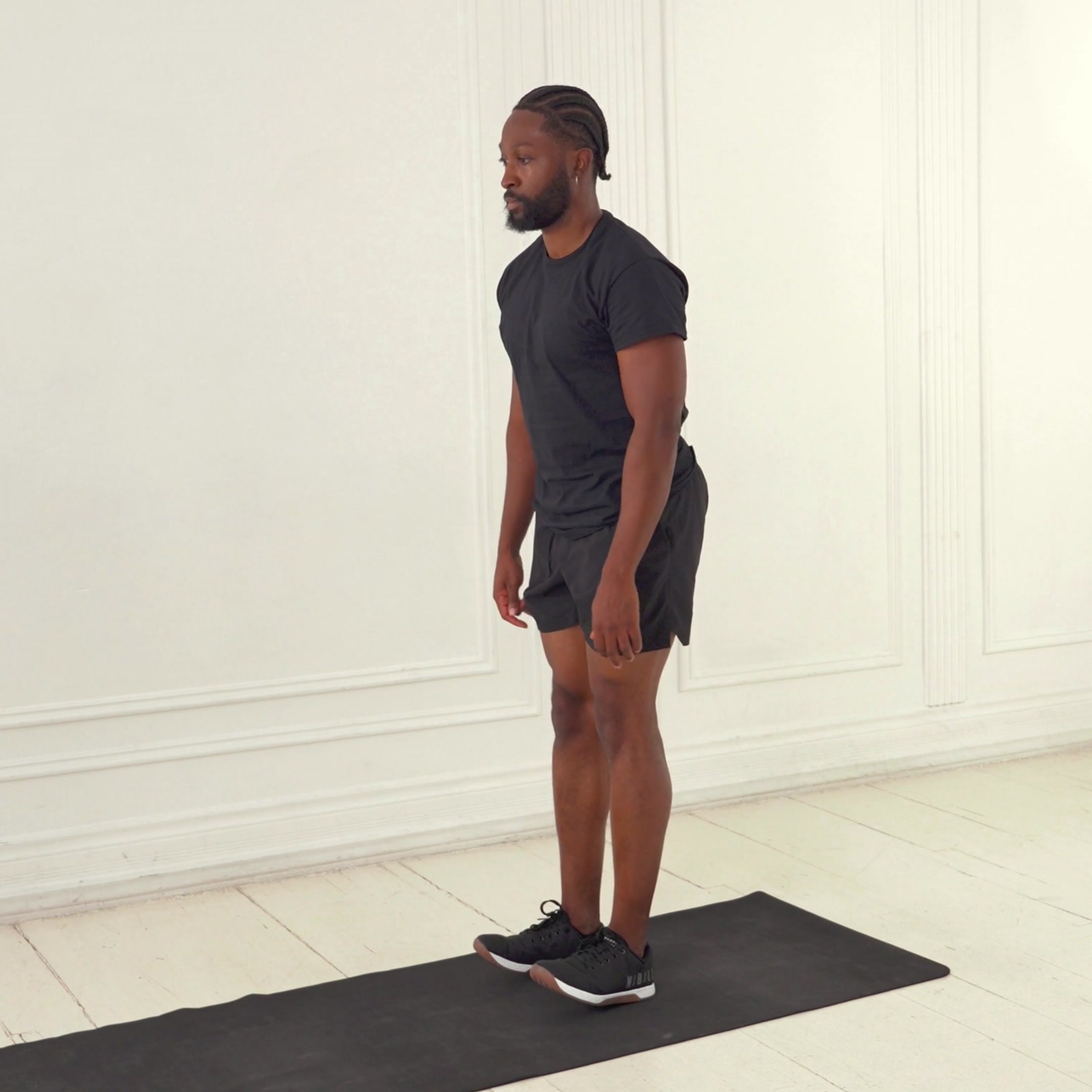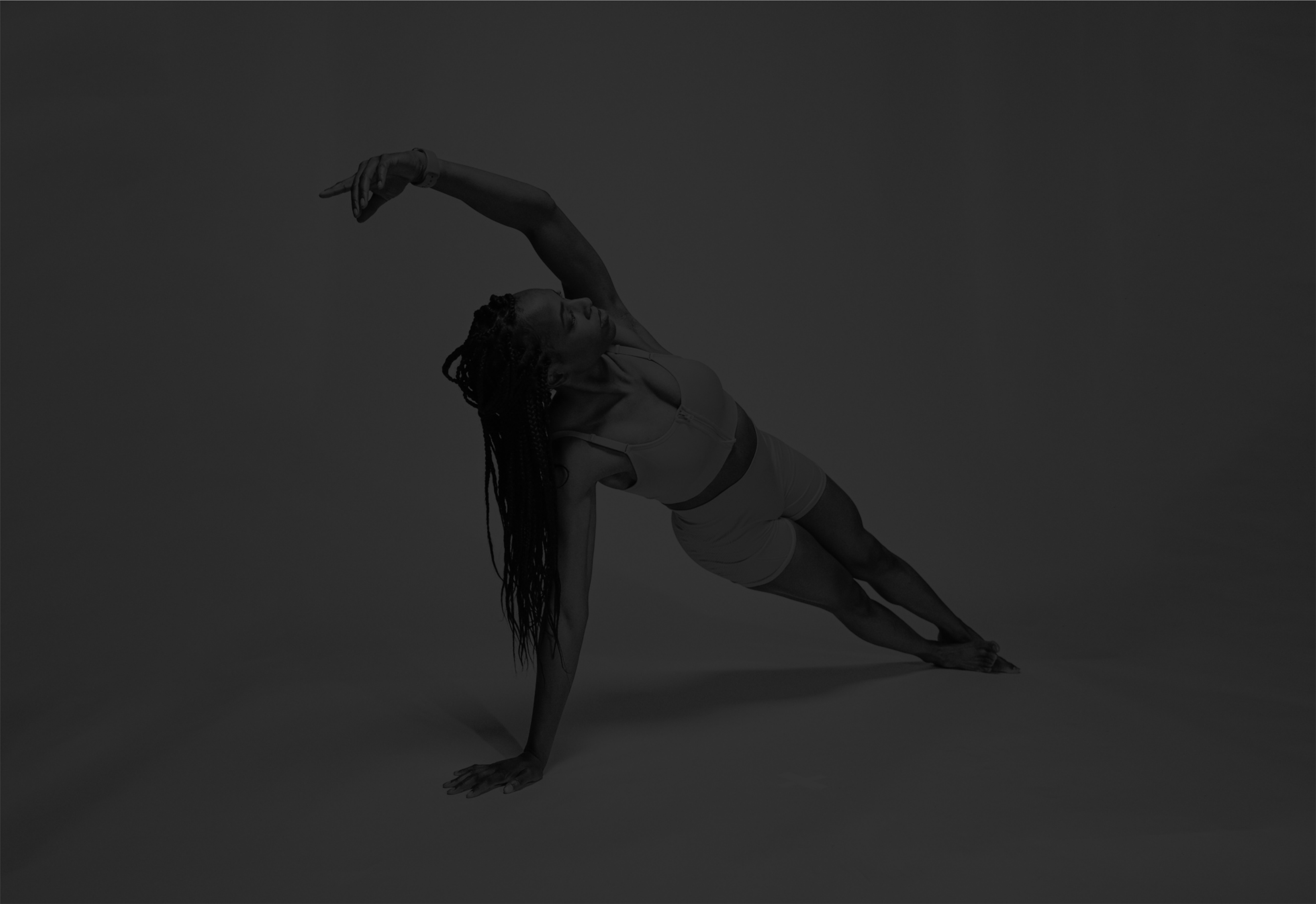Bodyweight Calf Raise
A bodyweight isolation exercise targeting the gastrocnemius and soleus to build calf strength, endurance, and ankle stability; ideal for beginners and performed standing on flat ground.
About Exercise
Equipment
Difficulty
1/5 • Beginner
Primary Muscle Groups
Calves
Popularity Score
8
Goals
Training Style
Setup Requirements
Requires Rack
No
Requires Bench
No
Requires Spotter
No
Space Needed
Small
Noise Level
Low
Muscle Breakdown
View Muscle MapCalves
10/10Gastrocnemius, Soleus
Programming
Typical Rep Range
10-20 reps
Rest Between Sets
30-60 seconds
How to Perform
Stand with feet hip-width apart, toes forward, core engaged, and hands on a wall for balance if needed.
- Push through balls of feet to raise heels high.
- Squeeze calves at the top and hold briefly.
- Lower heels slowly with control.
- Repeat for reps, keeping knees straight but unlocked.
Coaching Tips
Form Cues
- Push through toes
- Squeeze at top
- Control the drop
- Knees soft
- Core tight
Breathing
Inhale during descent and exhale during ascent while bracing core.
Tempo
2-1-2
Range of Motion
Raise heels until fully on toes; lower to flat or slightly below if on step for stretch.
Safety
Safety Notes
- Avoid hyperextension of knees
- Stop if Achilles pain occurs
- Use support for balance
- Warm up calves first
Spotting
No spotting needed; self-supported bodyweight exercise.
Common Mistakes
- Bouncing at bottom
- Partial range
- Locking knees
- Leaning forward
When to Avoid
- Achilles tendonitis
- Severe ankle instability
Flexibility Needed
- Adequate ankle dorsiflexion
Build Up First
- Basic balance control
Also known as
Standing Calf Raise, Calf Raise, Heel Raise
Found this helpful?
Share your thoughts or help us improve this guide.
Similar Exercises

Bodyweight Reverse Calf Raise
Bodyweight
Calves
Bodyweight Walking Calf Raise
Bodyweight
Calves

Bodyweight Single-Leg Calf Raise
Bodyweight
Calves

TRX Calf Raise
TRX
Calves

Leg Press Calf Raise
Leg Press Machine
Calves
Hack Squat Calf Raise
Hack Squat Machine, Plates
Calves

Smith Machine Calf Raise
Smith Machine
Calves

Bodyweight Lunge

Bodyweight
Quads

Bodyweight Sit-Up

Bodyweight
Abs

Bodyweight Squat

Bodyweight
Quads


subscribe to our newsletter
Contact Us
hello@trainfitness.aiFind Us
130 Spadina Avenue, Toronto,
Ontario, M5V 0H4, Canada
©2025 All Rights Reserved
